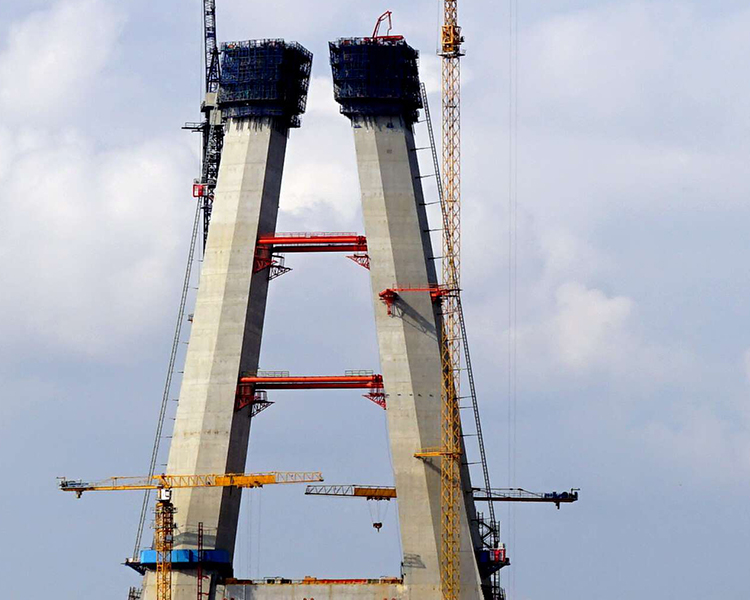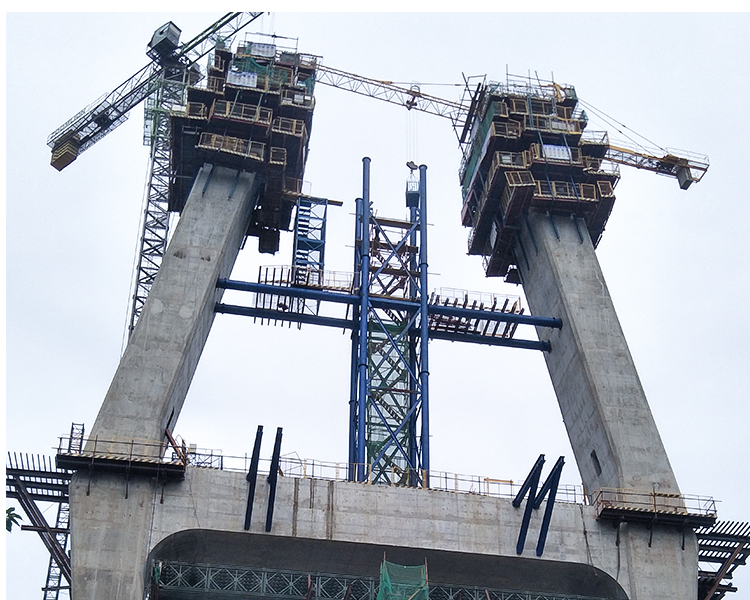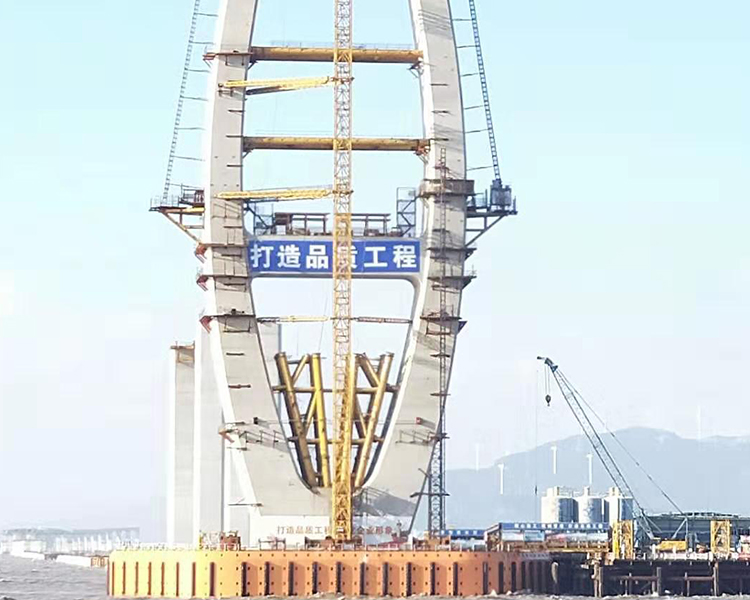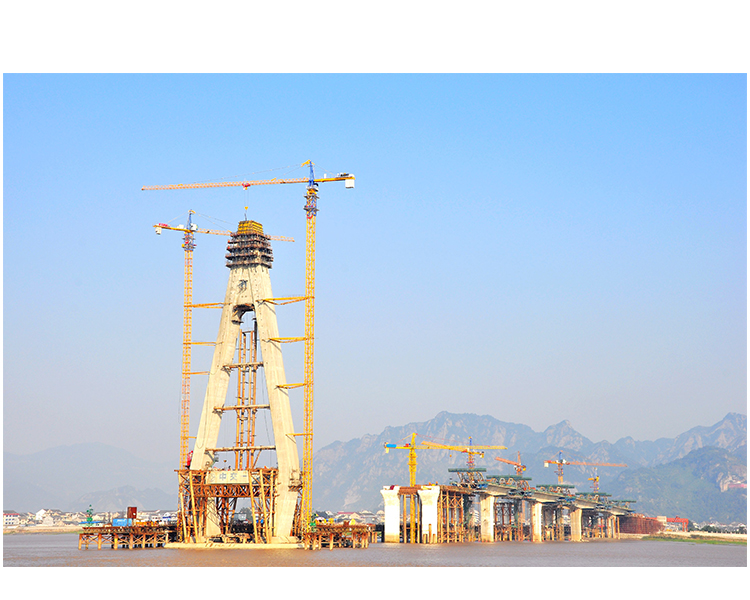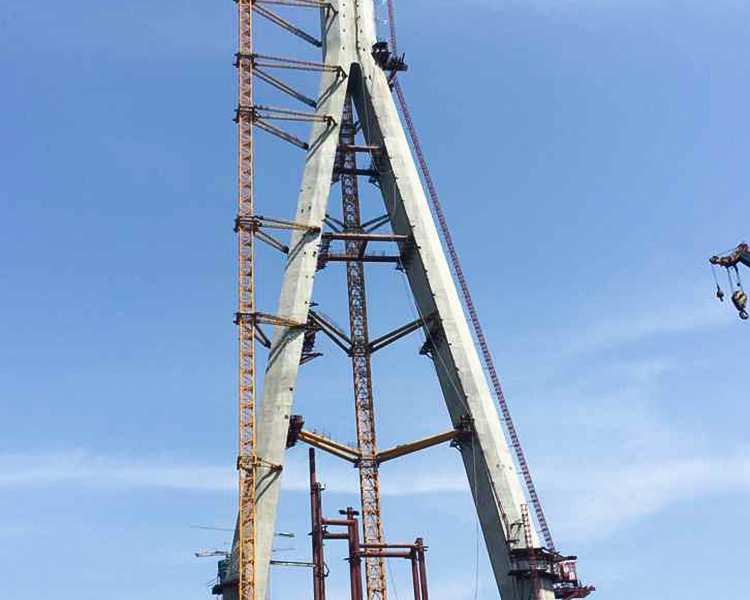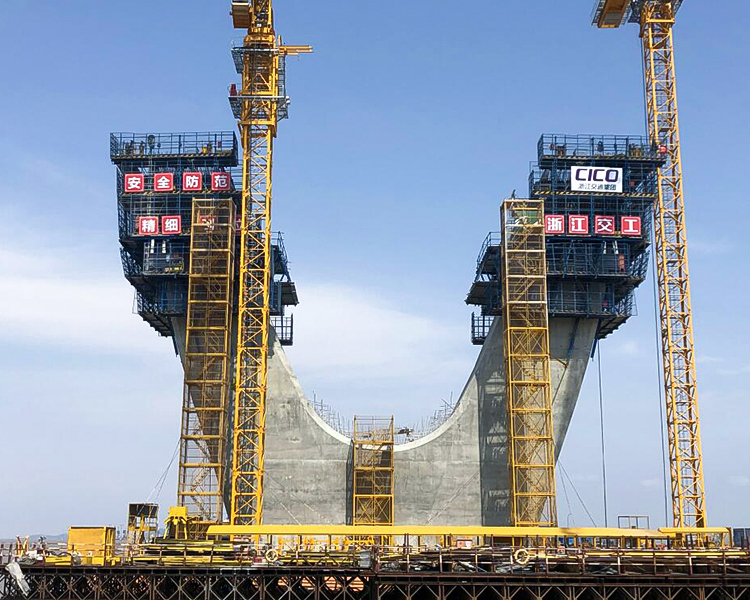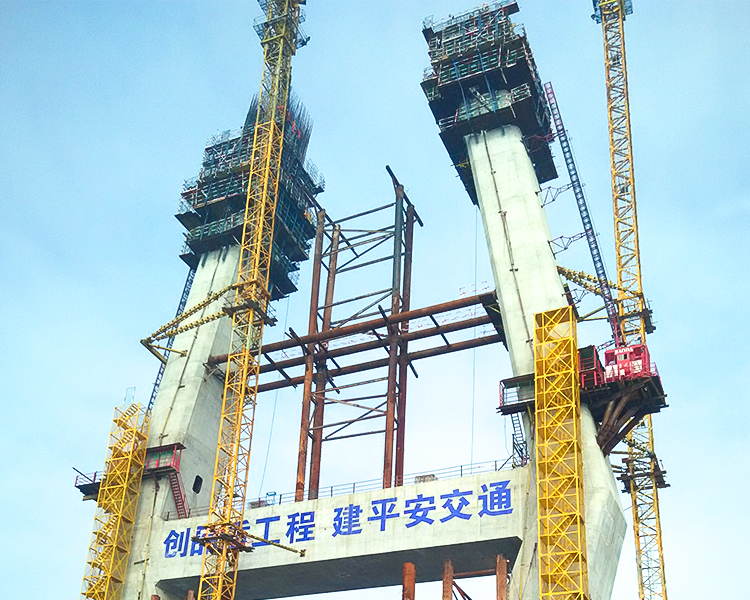Lianggong Formwork Outstands Itself in the Construction of Safe and Innovative Bridges: Examples of Lianggong Formwork Systems in Bridge Projects
Lianggong formwork systems have been used in various bridge construction projects around the world. The systems provide a cost-effective, efficient, and safe solution for constructing bridges, while also allowing for customization to fit the unique needs of each project. In this article, we will discuss some examples of bridge projects that utilized Lianggong formwork systems.
Examples of Liangong Formwork Systems Used on Major Bridges:
• Stonecutters Bridge, Hong Kong: Liangong provided the self-climbing formwork for the bridge's two main towers, which reach up to 292 m high.
• Sutong Bridge, China: Liangong supplied the self-climbing scaffolding and formwork for the bridge's main arch span and the climbing scaffolding for its cable towers.
• Tsing Ma Bridge, Hong Kong: Liangong provided materials and self-climbing formwork for the construction of the bridge's main span, box girder, and 208 m high towers.
• Xijiang River Bridge, China: Liangong supplied a self-climbing formwork and heavy-duty gantry crane for the construction of this bridge's rockets, arches and 168 m tall main towers.
• Wujiang Yangtze Bridge, China: Liangong provided automatic self-climbing formwork for the construction of the bridge's 160 m tall main suspension towers.
• Balinghe Bridge, China: Liangong supplied large-scale scaffolding and formwork for the construction of this bridge's concrete arch, columns and 164 m tall towers.
• Stonecutters Bridge, Hong Kong: The Stonecutters Bridge is a cable-stayed bridge that spans the Rambler Channel in Hong Kong. The bridge is the longest cable-stayed bridge in the world and was constructed using Lianggong's Hydraulic Auto-Climbing Formwork System. The system allowed for the rapid construction of the bridge's unique design, which includes two pre-cast concrete towers that rise 298 meters above the water.
• Second Penang Bridge, Malaysia
The Second Penang Bridge is a cable-stayed bridge that spans the Penang Strait in Malaysia. The bridge is the longest bridge in Southeast Asia and was constructed using Lianggong's Hydraulic Auto-Climbing Formwork System. The system allowed for the efficient construction of the bridge's complex design, which includes two 230-meter-high concrete towers and a main span of 24 meters.
• New Champlain Bridge, Canada
The New Champlain Bridge is a box girder bridge that spans the Saint Lawrence River in Montreal, Canada. The bridge was constructed using lianggong formwork system, which allowed for the efficient construction of the bridge's 3.4-kilometer-long superstructure. The system also allowed for customization to fit the unique design requirements of the bridge.
• HZMB Hong Kong-Zhuhai-Macau Bridge, China
The Hong Kong-Zhuhai-Macau Bridge is a complex bridge system that spans the Lingdingyang Channel in China. The bridge is the longest sea-crossing bridge in the world and consists of various types of bridges, including cable-stayed bridges, box girder bridges, and suspension bridges. Lianggong formwork systems were used in the construction of the bridge's various components, including the cable-stayed bridge towers, box girder bridge superstructures, and suspension bridge cables.
Conclusion
In conclusion, Lianggong formwork systems have been used in various bridge construction projects around the world. These examples show the versatility, efficiency, safety, and cost-effectiveness of Lianggong formwork systems in constructing bridges of various types and sizes. With their customizable design, these systems allow for the construction of unique bridge designs while also providing strong and durable support to traffic and loads. Lianggong formwork systems are sure to continue playing a significant role in shaping the future of bridge construction.
Filipino
Bahasa Indonesia
한국어
Tiếng Việt
English
العربية
Français
Русский
Español
Português
Bahasa Melayu
Deutsch
italiano
日本語
Nederlands
ไทย
Polski
Türkçe
አማርኛ
ພາສາລາວ
ភាសាខ្មែរ
ဗမာစာ
தமிழ்
magyar
Română
Čeština
Монгол
қазақ
Српски
हिन्दी
فارسی
Kiswahili
Slovenčina
Slovenščina
Norsk
Svenska
українська
Ελληνικά
Suomi
Հայերեն
עברית
Latine
Dansk
اردو
Shqip
বাংলা
Hrvatski
Afrikaans
Gaeilge
Eesti keel
Māori
नेपाली
latviešu
অসমীয়া
Беларуская мова
Български
डोग्रिड ने दी
Esperanto
Eʋegbe
íslenska
Türkmençe


